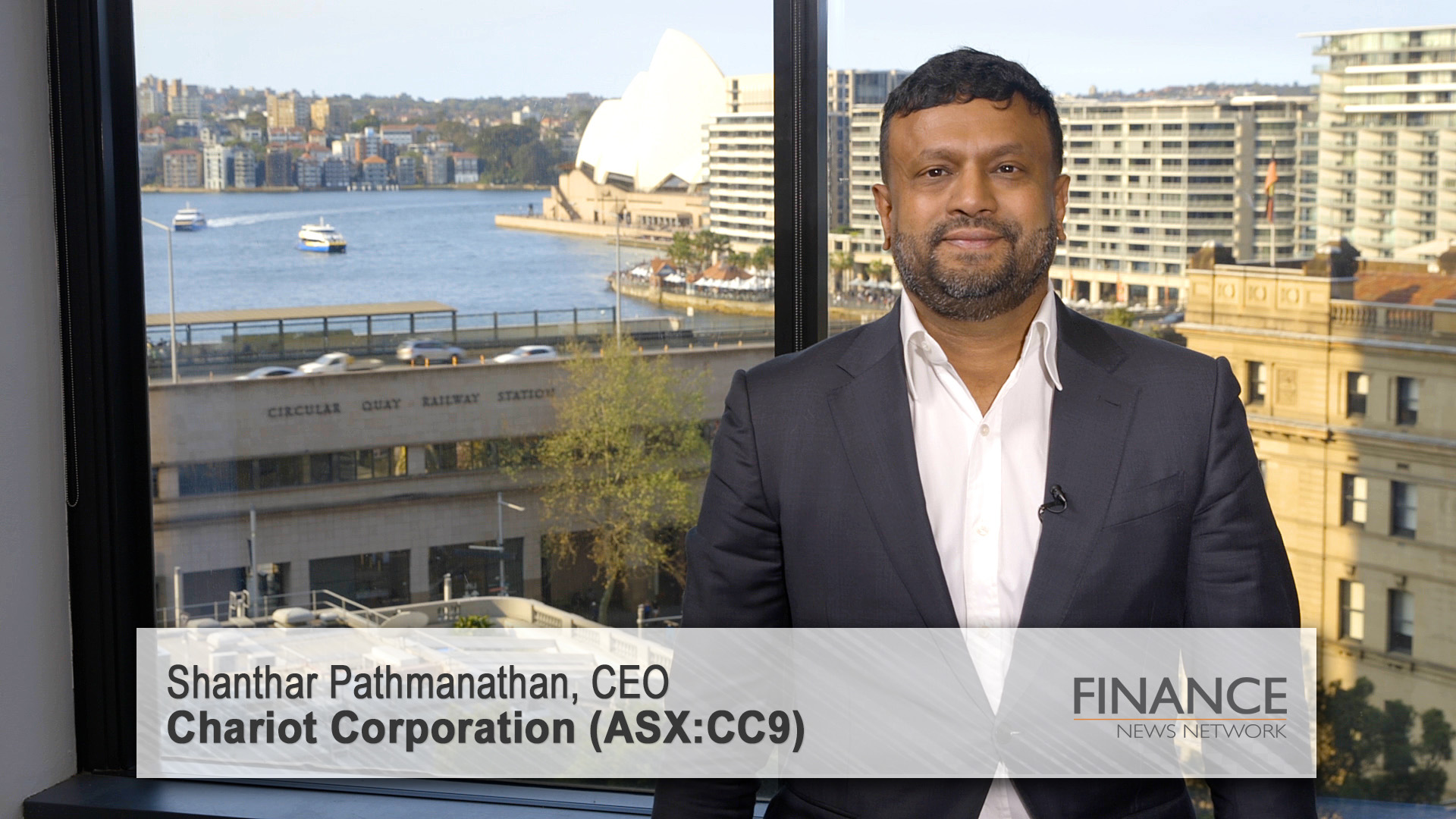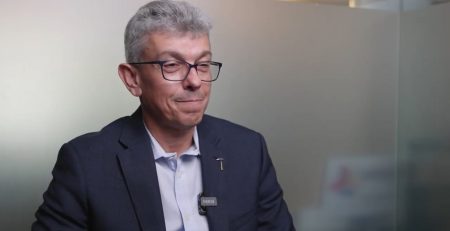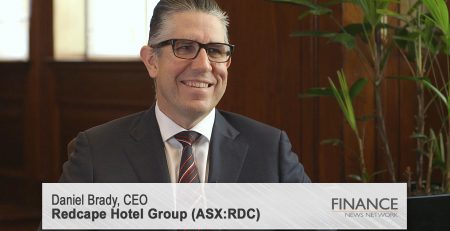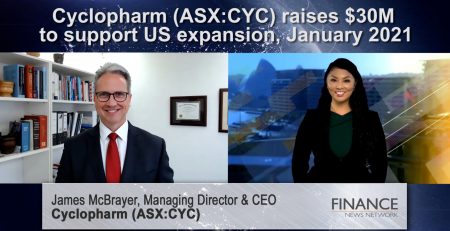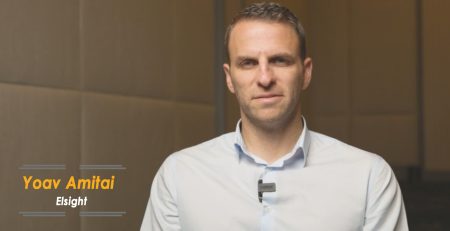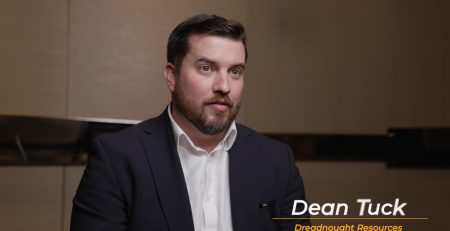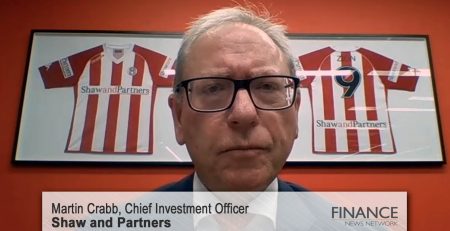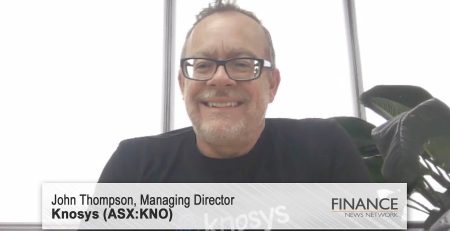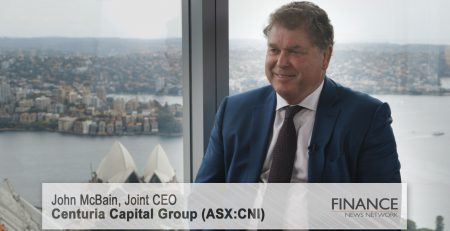Chariot Corporation discusses US lithium mining opportunities and expansion plans
Paul Sanger: Hi, I'm Paul Sanger from the Finance News Network, and today we're talking with Chariot Corporation CEO and founder Shanthar Pathmanathan. Welcome, Shanthar.
Shanthar Pathmanathan: Thanks, Paul. Thanks for having me.
Paul Sanger: It's a pleasure. Okay, so welcome to The Network. Let's kick off the interview today. The US, why are you focused on the US?
Shanthar Pathmanathan: Paul, we see the US as a critical opportunity. It's the latest play for ASX lithium juniors at the moment. The US is about 10 years behind Australia and in terms of its lithium sector, Australia responded to China, got off to a great start. The US is now responding in an EV market sense and it's got those great ripe opportunities where the lithium is at surface. The sector is largely undeveloped at this point. It's got its first two mines coming on stream and there's a huge market opportunity in terms of an actual domestic EV market there in the US as well. So we see mining coming back to the US and that lithium sector starting to surge from here on out. So we are positioned as one of the two big hard rock lithium players in the US at the moment.
Paul Sanger: Okay. So let's just talk about your project. So what's your flagship project currently in the US?
Shanthar Pathmanathan: Yeah, good question. Our flagship project is the Black Mountain Lithium Project. It's a hard rock lithium project. We had to beat off a pretty large company, a billion dollar market cap NASDAQ listed company, to get a hold of this project. It's one of two pegmatite provinces that are being operated on by the juniors, ASX juniors. So the other one is South Dakota. Our project, The Black Mountain Project is in Wyoming and we've got a stronghold in Wyoming at the moment. We've got six projects aside from The Black Mountain Project and targeting spodumene at surface, it's visible excellent grades so far from two pretty significant rock chip sampling programs. The next phase of work will be the drilling to test the targets and really understand how much of the spodumene bearing ore there is at that Black Mountain Project.
Paul Sanger: Okay. So you mentioned you've got five other projects, so what's the next one that you've got keen focus on at the moment?
Shanthar Pathmanathan: Yeah, so we've got six projects, right? The way I see it, these are part of our exploration pipeline. The other projects probably in order of priority would be Copper Mountain and then South Pass. So both have got historical artisanal mining for lithium minerals. Both have got documented lithium minerals at surface and that's certainly a characteristic of our entire US lithium portfolio is we've targeted assets with lithium minerals at surface, similar to what the early Australian lithium companies had about 10 years ago in Australia and which have now given rights to these mega multi-billion dollar deposits in Australia.
Paul Sanger: And all your projects that you have in Wyoming, are these Brownfield projects or the Greenfield projects?
Shanthar Pathmanathan: The US as a whole and Wyoming in particular is unexplored for lithium. So there's certainly some literature that dating back to the 1940s, identifying lithium at surface and the various pegmatites. We've got something like 700 pegmatites in Wyoming, right? They are not Greenfield, they're a little bit more advanced in Greenfield, because there's some existing literature on them. The mineralization can be seen at surface. But as I said that lithium industry as a whole in the US is very undeveloped and early in its development. So there's no such thing as currently the only producing lithium mine in the US is the Silver Peak mine, which is a 5,000 tonne per annum facility. So insignificant in the global lithium supply context, all of the major developments will happen from here on out.
Paul Sanger: So clearly you've got a lot in your hand, some great project by the sand that you're trying to develop. Tell us about the team that's going to help you with the next sort of phase of work.
Shanthar Pathmanathan: Yeah, so let me start on the corporate side first. I previously worked at Macquarie in New York and then in Australia and then also Deutsche Bank in Australia, oil and gas and chemicals most of the time. So I'm the founder and CEO of the company. Our chairman was previously the CEO of Macquarie in North America, Murray Bleach. And then Frederick Forney is an ex Macquarie managing director who's also on our board. He'll be an executive director with the company. On the geological side, we are fortunate to have a man by the name of Neil Stewart. So Neil was founding chairman of Orocobre Ltd, now Allkem (ASX:AKE).
Neil introduced me to the vast team that I now work with in the US. So notably we've got Edward Max Baker, Dr. Edward Max Baker. Max was previously chief geologist at Newcrest and later MIM or Mount Isa. And he's got a gold project over in Idaho at the moment. So the corollary of that is that we will inherit his team of about 12 or so people currently and they'll help us. They've already been helping us advance these projects and that team includes people from other geologists, geophysicists, geo technicians, field crew, and most importantly land managers to help with all the title work we do over there. We've got one of the largest land holdings for lithium in the United States of America. So that's where it becomes important to have really good landmen and that we have.
Paul Sanger: And also having that Macquarie connection at some point down the line, project financing will come nicely into play and help hopefully bring the projects to fruition. Yeah?
Shanthar Pathmanathan: Yeah. Over time I see that being more relevant. Short term we've got other sources of capital.
Paul Sanger: Tell us a bit more, what are your thoughts on clay stone hosted lithium?
Shanthar Pathmanathan: Look, I think clay stone has a big part to play in the global lithium supply equation. Clay stone is orders of magnitude larger in terms of the net lithium contained in the resources, than hard rock lithium. However, there's no current production of lithium carbonate from clay stone hosted lithium. Clay stone hosted lithium is a large scale, longer term opportunity. Shorter term we intend to keep those clay stone hosted assets, some of which we operate and others we have divested off to other companies to operate for us. The hard rock lithium will very much be our short term focus and that's what we will spend about 80% of our capital and time developing in the short term.
Paul Sanger: And I guess it's an obvious question, why are so many projects in your portfolio?
Shanthar Pathmanathan: The availability of lithium assets with mineralization at surface is a luxury of the time we're in today. It's very much an early mover advantage that we are seeing there. And so to that end, we want to seize on these opportunities with assets, with lithium mineralization at surface, bring them into our portfolio and then figure out how to advance those. Whether it be on our balance sheet or whether we continue to do the various divestments we've done. But we think the key is to have assets where the mineralization is there, and then in terms of management and capital, I think those are problems we can then solve down the road. So we see it as a luxury of our time that we've got these assets similar to at the beginning of other industries like the oil industry a couple of 100 years ago where they had oil assets which had seeps at surface. So it was for that reason to take seize on the opportunity to acquire these assets with mineralisations at surface. And that's why we've got so many assets.
Paul Sanger: Bit of an obvious question, but tell us why you have so many projects in your portfolio. How do you see that as an advantage for Chariot?
Shanthar Pathmanathan: The US has got these opportunities are pretty ripe for exploration, right? So assets with lithium mineralization and surface and as I said, the US is 10 years behind Australia. So to that end, we think this is a luxury of our time that we have these opportunities. So we think it's prudent to acquire and bring these into our portfolio and certainly we've done that to date. We have, as part of that process also divested four assets to four public companies. Our cost, there was about a million and a half US dollars and we're able to successfully execute on those divestments for total proceeds of 16 and a half million USD. So those assets are by default on other people's balance sheets, they'll be operated and funded by other public companies, giving us some additional capital as well to focus on our core assets, which are the Black Mountain and resurgent projects.
Paul Sanger: Wyoming, water supply. All good?
Shanthar Pathmanathan: With our process, it's hard rock lithium, so it's not the brine and the stone and all that. So we've got a lot of clay stone, but the water with hard rock is a minimal issue. It's just the processing requirement. It's not for the actual.
Paul Sanger: Yeah, okay.
Shanthar Pathmanathan: With brine, you actually literally depleting a reservoir.
Paul Sanger: Yeah, okay.
Shanthar Pathmanathan: And you can't pull stuff out unless you have water rights. Okay? With our hard rock lithium, minimal water required. And then moreover, Wyoming is not that dry of a state. Right?
Paul Sanger: And with the permitting, who owns the land, where your projects are?
Shanthar Pathmanathan: These are called unpatented claims.
Paul Sanger: Yeah. Okay.
Shanthar Pathmanathan: They're administered by the Bureau of Land Management, the federal body, US federal government. We are the owner of those claims. So we've paid or acquired, we've done three deals with two different vendors. We have staked most of our own ground. So we're the registered owner with the Bureau of Land Management. That in entails some payments every year. The annual holding costs is about 750,000 Australian dollars per year. So it's a pretty substantial cost, but we've also got a pretty large land position in the US. So our companies have an underlying a 100% interest in these claims.
Some of our geologists do have a minority interest in some of the subsidiaries that we use to operate over there. So we're the owner, but it's federal ground. We have the rights to the mineral endowment of that ground. There are situations where cattle ranches have got grazing rights, so even during exploration, the cattle ranches can temporarily bring their cattle onto the property, graze it. They have no underlying title, they have no freehold title, and then as required they'll be moved off in terms of converting these to mining leases, they will all have to be removed from the properties, longer term.
Paul Sanger: And if you've got any neighbours that currently have assets digging spodumene in Wyoming, any other big companies around you?
Shanthar Pathmanathan: No.
Paul Sanger: When you said Wyoming, I can't think of one that I've heard something. I've heard Oregon, Nevada and what have you. But first one I've heard Wyoming.
Shanthar Pathmanathan: Yeah. So we had to go through a competitive auction process to get hold of this property. So it was a couple of bidders. One billion market cap company.
Paul Sanger: Yeah, interesting.
Shanthar Pathmanathan: But once we secure that property, we realized that good drill results from this property is going to trigger competition. So we've taken out the whole state in terms of opportunities. We've got six other swarms of pegmatites, right? That we have taken out some 700 pegmatites in our portfolio in Wyoming. The way I see it, this it could be the Gulf of Mexico for lithium, sitting in the heart of the US, and it's incumbent on us to get control of that early before the competition can move in. South Dakota is the next state and there's a bit of activity over there. There's another ASX listed company that's just drilled into some spodumene bearing pegmatites there. So same geology, but Wyoming, it's more suitable I think for developing a mine. It has population of 600,000 people bodes well in terms of developing a mine and it's already a resource that it produces a coal, uranium, oil. So it is an ideal position for us to be, and we've taken a strategic position there by taking out all of available opportunities preemptively.
Paul Sanger: And then look, all the stars align, everything goes to plan. When do you think the earliest you can bring Black Mountain onto production?
Shanthar Pathmanathan: Look realistically, four and a half to six years. That's a realistic picture. I think given it is a critical mineral for the United States, government intervention may play a role, but there's still considerable work to be done. Expiration studies, feasibility studies, and then the various permits to be obtained from the government agencies. So I think realistically four and a half to six years is a good timeline for that.
Paul Sanger: Which actually it sounds when you say it's a long time, but actually for a lithium project it's not. And hopefully by then there'll be some carbon and hydroxide processing plants that will be hopefully close by that you can send your hard rock to.
Shanthar Pathmanathan: Yeah. Correct. So we've already been approached by some strategics in the US, car makers and so on. You raise a good point, Paul. So instead of focusing on what happens next year and the year after, short term, I think we need to worry about what happens 2030 onwards, because there's some serious deficits that have been predicted for that time period. So as a company, our mindset's focused on a little bit longer term than the market currently.
Paul Sanger: And I also think from an investor point of view now is they're looking for the new place, and particularly one Australian industry, companies that have that focus in the US, because anyone knows the US it is ramping up. It's still in its infancy as you say, and the money that's going to be thrown at these new projects, the big guys are going to just sit there and then that's actually be your biggest problem with the big guys looking to take the assets on their hand before you can bring them to fruition. But that's a good problem to have fighting off the big boys. Yeah?
Shanthar Pathmanathan: Well, that's always good to have. We've started to entertain the big boys, so to speak, already through various channels and conversations. But I'll tell you this, so the US when it wants to, because it does through the capital market, means it has the ability to respond at will to a problem at hand. So we saw that with shale . So the US is now the largest oil producer in the world. So they saw their vulnerability geopolitically to be on other regions for oil. And in the last 15 years they've developed a very difficult asset class, the shale oil and gas asset class, to become the largest oil producer on the planet. So similar way mining is somewhat dormant in the US at the moment. They went through the urbanization trends 70 years ago. All the big mining companies, copper companies, steel players have subsided in the US, but the US has got an ability, it's got the population, it's got the capital, it's got the wherewithal to respond.
Paul Sanger: It's got the money!
Shanthar Pathmanathan: It's got the money, that's right! So I see the mining sector coming back in the US with some volition in the near term and we're already seeing signs of that. So to that end, we're lucky to have the team we have, we've got about 15 people on the ground, very experienced. We've got one of the best exploration teams in the country at the moment working with us. Again, if you look at the pedigree of our geologist, Neil Stewart, ex founding chairman of Orocobre Ltd, Max Baker, previously Chief geologist at Newcrest. These all bode well for attracting talent and for that part of the business to be organized.
Paul Sanger: Shanthar, many thanks for your time today. It was an absolute pleasure.
Shanthar Pathmanathan: Thank you, Paul. Thank you.
Ends
Copyright 2023 – Finance News Network
Source: Finance News Network

